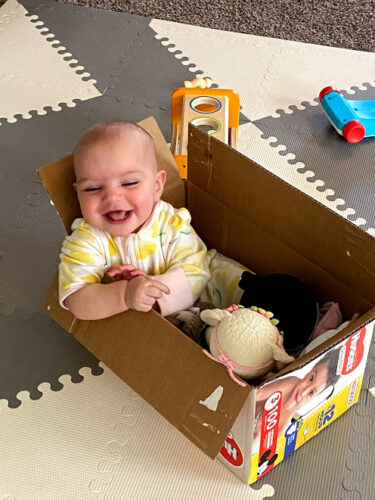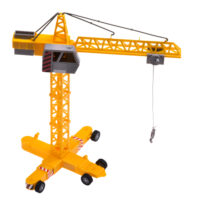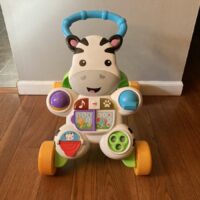Sitting up is a huge milestone for your baby. All of a sudden, they can see the world in a different way. They can play with different toys and they can interact with people differently. Although you do not want to rush them before they are ready, here are some tips to help your baby learn to sit up.
Tips for Teaching Baby How to Sit Up
Tummy Time
If your baby is at the stage of almost sitting up, I’m sure you have heard the words “tummy time” more than once. That is because tummy time is key for all baby developmental milestones. Before babies can sit up, they can have to have good head control. Allow your baby to lay on their stomach and lift their head up to gain that head control and strength.
Once your baby can hold their head up high while pushing up through their chest and interact with toys during tummy time, they may be able to start practice sitting up. That does not mean you should stop tummy time though. Tummy time is crucial for building muscle and balance to help them perfect sitting up.
Also, allowing your baby to have time playing on their back is good for building muscle strength needed for sitting as well. Tummy time mats with hanging toys above are great for back playtime.
Even once they learn to sit up, tummy time is still important for them to gain that muscle and head towards the next milestone of crawling. Your baby can do tummy time on a blanket, on your chest, or on a play mat. Check out our favorite baby play mats and gyms.
Sit Behind Them
One of the most simple and least expensive ways to help your baby learn to sit is to use yourself as their support. You can sit behind them either cross-legged or legs spread out and place your hands around them to support.
When they first practice sitting, place your hands higher up around their ribcage to provide more support. As they get stronger, move your hands lower to their waist to allow their muscles to do more of the work. Last, just hold their hips to support.
After they sit well with just their hips supported, show them how to place their hands in front of them to support themselves in what is called a tripod sit.
Use a Boppy Pillow
The Boppy Pillow is a great investment for all new parents. Not only is it great for nursing or bottle-feeding, but it also can be used for tummy time support or a soft place to lay your baby down. As your baby gets older, it is also a good tool for teaching your baby to sit up.
Once your baby has good head and trunk control, try sitting them up with the Boppy pillow around their hips. The pillow will help support them and will provide a soft landing if they fall over. If they tend to flop forward while trying to sit, put the pillow in front of them for support.
The pillow allows them to practice balancing and using the muscles they need to sit up, while also providing them some support. You can use any kind of pillows to prop around them if you do not have a Boppy pillow.
Place Toys in Front of Them
Around the age that babies learn to sit up, they also start to really like to interact with toys. This is great because toys can help babies learn to sit up. Have your baby sit up with support (either you sitting behind them or a Boppy pillow behind them) and put some toys in front of them. Musical toys work great too!
In the beginning, it is best to put the toys either at their feet or at chest height. Your baby will want to try to reach for and interact with the toy, helping them work on their balance while sitting. Toys such as the VTech Busy Learners Activity Cube are good because they can interact with it, it sits closer to chest height, and they can even hold on to it for stability. As they become more steady sitters, place toys off to the side or even a little bit behind them to challenge their balance.
If they wobble a bit, that is ok! It means their body is learning how to help them keep their balance. When they first sit by themselves, it is nice to have a soft mat such as the Skip Hop Foam Baby Play Mat under them to protect when they inevitably topple over.
Sit Them in a Box or Laundry Basket

Have a large empty box laying around (think diaper box)? Don’t throw it away! Boxes can be all sorts of fun for babies, even those that are just learning to sit up. This is a great way to help them learn to sit up without spending a dime. You can use an empty laundry basket to do this as well. Of course, do this safely and while watching!
When your baby is able to sit up with only minimal support, use the box or laundry basket as the support! You can fill the box with balls or other fun toys for them to interact with.
If they are still wobbling forward, place some pillows in front of them. If you are using a laundry basket, you can attach a row of linking rings in front of them to create support and an interactive activity.
FAQ about Babies Sitting Up
When do babies learn to sit up?
Babies typically learn to sit up on their own anywhere from 4-8 months. All children are different and will hit the sitting milestone at different times. If your child is not sitting without support by 9 months, it is time to reach out to their doctor.
How do I know if my baby is ready to learn to sit up?
One way to tell is to notice if you are not needing to support them quite as much when they are sitting in your lap. Also, make sure they can push up through the chest in tummy time and possibly be starting to pivot around on their arms. If they are rolling both ways easily, that is another sign that they may be ready and strong enough.
Do baby floor seats help babies learn to sit up?
Baby seats floor seats can be a lot of fun for your baby and a great place to put them when you need to get things done. Even though they put your baby in the sitting position, they actually do not help them learn to sit up.
The seat props them up, so they do not need to use their muscles to hold themselves up. Building this muscle is what helps them learn to sit up on their own. There is nothing wrong with using our favorite baby floor seats, but don’t expect them to help your baby learn how to sit up on their own.
Is it bad to make my baby sit up before they are ready?
You should not have your baby sit up before they can hold their head up on their own (around 3-4 months). If your baby has head control but cannot sit up without lots of support, it is probably not a good idea to have them try on their own just yet. Have them sit up in your lap or upright in a stroller and practice lots of tummy time.
If you start them too early, you may be taking away from their valuable floor time where they can learn to push up and roll, which should happen before they sit on their own. Also, if they are very unstable with sitting, they may be more likely to fall and get injured.
When can babies get into the sitting position on their own?
Your baby should be able to get into the sitting position on their own between 8-12 months. This usually happens right around the time they start crawling.
Wrap Up
Although your baby will eventually learn to sit up, there are a few ways to help support them with this major milestone.
- Make sure to do lots of tummy time!
- Sit behind them to help teach and support
- Use a Boppy Pillow for support and safety
- Incorporate toys to help keep their attention and practice balance
With these tips, I have no doubt your baby will be able to sit up and explore the world vertically in no time!









